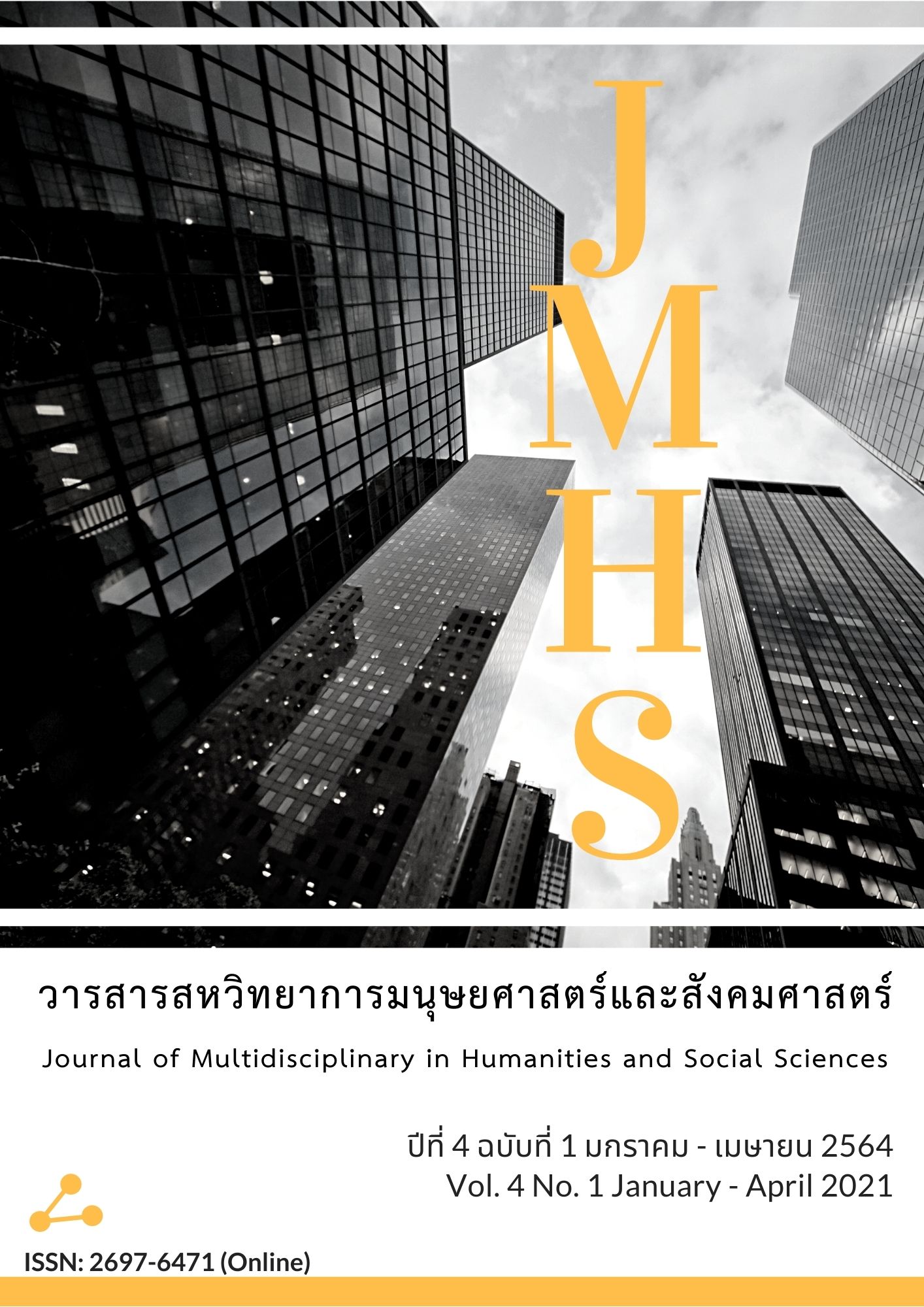Analysis of tourists’ demographic characteristics and factors associated with agricultural tourism management in Ratchaburi Province
Main Article Content
Abstract
The objectives of this study were to study the level of factors associated with agricultural tourism management in Ratchaburi province (i.e., tourists’ motivations, travel behaviors, attraction components and marketing mix) different in tourists’ demographic characteristics. A questionnaire was used to collect data from 400 tourists visiting in 10 agricultural attractions. The data was analyzed by using chi-square test, t-test and one-way analysis of variance. The results indicated that the level of pull factor, travel group composition, ancillary service, amenity, process and providing quality service were significantly different by demographic characteristics. The recommendations for managing agricultural tourism in Ratchaburi province are 1) preparing amenities to provide services for tourists, 2) creating cooperative networks to exchange tourism information with government, private sector and local people, and 3) training staffs related to service processes in tourist attractions.
Article Details
Views and opinions appearing in the Journal it is the responsibility of the author of the article, and does not constitute the view and responsibility of the editorial team.
References
กระทรวงการท่องเที่ยวและกีฬา. (2554). การท่องเที่ยว: อุตสาหกรรมในการพัฒนาประเทศ. สืบค้นเมื่อ 27 ตุลาคม 2562, จาก https://www.mots.go.th/more_news_new.php
คณะกรรมการนโยบายการท่องเที่ยวแห่งชาติ. (2559). แผนพัฒนาการท่องเที่ยวแห่งชาติ ฉบับที่ 2 (พ.ศ. 2560-2564). กรุงเทพฯ: สำนักงานปลัดกระทรวงท่องเที่ยวและกีฬา.
ธรรมศักดิ์ โรจนสุนทร. (2542). สรุปผลการสัมมนาการพัฒนาการท่องเที่ยวภาคเหนือ. กรุงเทพฯ: การท่องเที่ยวแห่งประเทศไทย.
ธีรกิติ นวรัตน ณ อยุธยา. (2547). การตลาดสำหรับการบริการ: แนวคิดและกลยุทธ์. กรุงเทพฯ: จุฬาลงกรณ์มหาวิทยาลัย.
นุชนารถ ไชยโรจน์. (2541). การจัดการท่องเที่ยวแนวใหม่. จุลสารการท่องเที่ยว, 17(2), 12-18.
พีรชัย กุลชัย. (2543). ความสัมพันธ์ระหว่างพฤติกรรมการเปิดรับข่าวสารกับความรู้ และทัศนคติที่มีต่อการปรับปรุงวิธีการผลิตทางการเกษตรของเกษตรกร ในจังหวัดฉะเชิงเทรา. กรุงเทพฯ: สำนักงานคณะกรรมการวิจัยแห่งชาติ.
รวีวรรณ โปรยรุ่งโรจน์. (2558). พฤติกรรมนักท่องเที่ยว. กรุงเทพฯ: โอเดียนสโตร์.
เลิศพร ภาระสกุล. (2553). พฤติกรรมนักท่องเที่ยว. กรุงเทพฯ: มหาวิทยาลัยธุรกิจบัณฑิตย์.
วชิราภรณ์ โลหะชาละ. (2558). พฤติกรรมนักท่องเที่ยว. กรุงเทพฯ: พี. เอ็น. เคแอนด์สกาย์.
วรัญญา ภัทรสุข. (2554). ระเบียบวิธีวิจัยทางสังคมศาสตร์. (พิมพ์ครั้งที่ 4). กรุงเทพฯ: โรงพิมพ์แห่งจุฬาลงกรณ์มหาวิทยาลัย.
ศิริวรรณ เสรีรัตน์ และคณะ. (2552). การบริหารตลาดยุคใหม่. กรุงเทพฯ: พัฒนาศึกษา.
สุทธิชัย ปัญญโรจน์. (2559). 10 กลยุทธ์ทางการตลาด. สืบค้นเมื่อ 11 ธันวาคม 2562, จาก https://www.gotoknow.org
สุรีรัตน์ เตชาทวีวรรณ. (2545). พฤติกรรมนักท่องเที่ยว: เอกสารประกอบการสอนคณะวิทยาการจัดการ. ขอนแก่น: มหาวิทยาลัยขอนแก่น.
สำนักงานจังหวัดราชบุรี. (2560). แผนยุทธ์ศาสตร์เพื่อพัฒนาการท่องเที่ยว จังหวัดราชบุรี. สืบค้นเมื่อ 30 ตุลาคม 2562, จาก http://www.ratchaburi.go.th/plan/index.html
Buhalis, D. (2000). Marketing the Competitive Destination in the Future. Tourism Management, 21(1), 97-116.
Cochran, W. G. (1977). Sampling techniques. (3rd ed.). New York: John Wiley & Sons.
Cronbach, L. J. (1951). Coefficient alpha and the internal structure of tests. Psychometrika, 16, 297-334.
Morrison, A. (2013). Marketing and Managing Tourism Destinations. New York: Routledge.
Pandurang, T. (2000). Agri-tourism: Innovative Supplementary Income Generating Activity for Enterprising Farmers. Retrieved January 5, 2020, from http://www.agritourism.in/.../Agri-Tourism_Concept_Note.pdf
Pearce, P. L. (1991). Analyzing Tourist Attractions. Journal of Tourism Studies, 2(1), 46-55.
Pelasol, R. J. et al. (2012). Destination in The Southern Part of lloilo, Philippines. JPAIR Multidisciplinary Research 8(1). DOI:10.7719/jpair.v8i1.173


